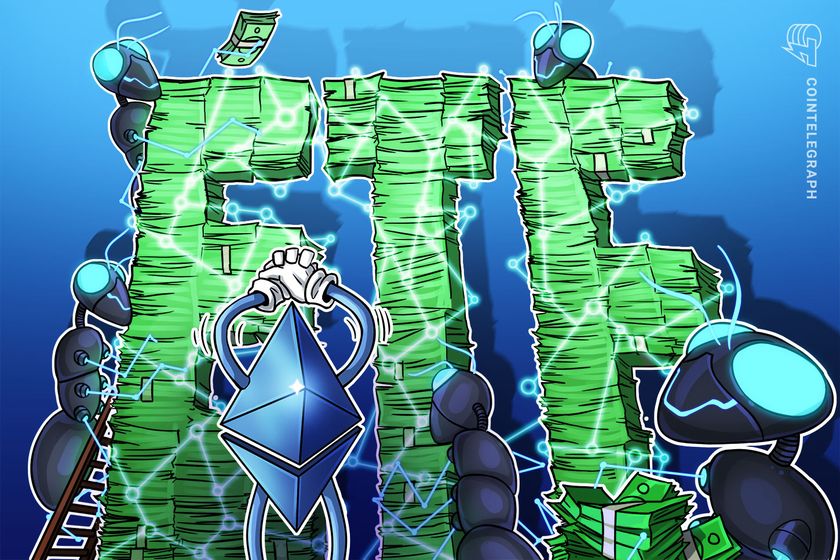DeFi snowball will turn into a Web 3.0 avalanche

We are at a pivotal moment in the history of the internet. And DeFi is a symptom of the real shift from centralized services to decentralized.
Decentralized finance has exploded over the past 12 months. The swapping, staking and yield farming successes have been well touted. The DeFi market cap has reached $45 billion, and there’s over $28 billion total value locked in DeFi today. That’s up from $600 million in January 2020 — a 4,300% increase.
As with all nascent technology, new money flowing into a sector attracts talent, innovation and the best entrepreneurs. Whether we like it or not, the record-high token prices will also attract the attention of mainstream media and Wall Street. This cocktail of factors, coupled with the glitz and glam of DeFi, is the result of the true, silent hero that is enabling this tsunami of capital to flow around. Without this, DeFi would not be possible — I am of course talking about the infrastructure that underpins the decentralized internet, or Web 3.0.
At the time of writing, loans outstanding in DeFi are up 22x from $150 million last year to almost $4.5 billion today. Monthly decentralized exchange volume is up to $30 billion. And there are now over 230 decentralized applications, with innovative new projects announced on a daily basis. The largest projects in the DeFi space all boast impressive stats: The MakerDAO project has issued over $1.5 billion in Dai; Compound currently has $5.8 billion of assets earning interest across nine markets; and Uniswap has processed a lifetime volume of $51.7 billion.
Related: Was 2020 a ‘DeFi year,’ and what is expected from the sector in 2021? Experts answer
The numbers are impressive and ever-increasing. DeFi is on the brink of breaking into the mainstream as we see more institutional investors getting involved in the space. This will only continue to happen as we see more and more centralized finance flip onto blockchains.
For example, Uniswap and Curve are quickly rivaling the volume on top exchanges. These automated market makers are empowering individuals by allowing them to trade without the overhead of centralized exchanges and by allowing them to participate in liquidity pools. Users can now become market makers, cutting out intermediaries and giving centralized exchanges a run for their money. DeFi is eating their lunch, a prime example of what crypto was designed to do, cut out the intermediary, and the conditions are ripe for innovation.
Decentralized infrastructure and DeFi
DeFi would not have been possible with the internet as we knew it. Zooming in on the legacy internet, we see Web 2.0’s centralization, surveillance and intrusion giving power to a small minority. We are seeing this play out in fintech, with trading apps coming under scrutiny over the GameStop trading story. The adoption of DeFi signals a shift away from traditional institutions as large communities flock to build on something different: the decentralized infrastructure of Web 3.0.
Related: GameStop saga reveals legacy finance is rigged, and DeFi is the answer
We are witnessing not only the formation of a new financial center but also the formation of a new economy, new careers and new enterprises. This being said, there is still a long way to go. We have yet to see the Bloomberg or Robinhood of crypto emerge. I am excited to see more and more Web 2.0 developers flow into Web 3.0 from companies where they previously worked on centralized systems, selling data or pushing ads to their users. The infrastructure of Web 3.0 brought to you by Ethereum, IPFS and others gives developers an opportunity to build on decentralized infrastructure that they know will always be there, focusing on the user experience and user interface of their applications.
Web 3.0 is the future
I believe that blockchains are an integral part of the future of the internet. It is the foundation upon which these new ideas will be built. We have only scraped the surface with what is possible. Business models that can exist only on blockchains will emerge, giving opportunities to people who may have never had a chance of making a good living otherwise. In this decentralized, blockchain-backed future, there will be no single point of failure.
Ethereum has clearly been a leading DeFi enabler that is at the forefront of the Web 3.0 evolution. An Electric Capital report claims “Ethereum has 4x more developers than any other crypto ecosystem,” and roughly half of all functioning decentralized applications on the market are based on the Ethereum network. I believe Ethereum will remain the largest ecosystem through scaling solutions as well as other layer twos. Composability will continue to live on Ethereum, making it difficult for others to compete, and ERC-20 tokens will likely remain the standard within the ecosystem.
Related: Second layers will save the day in 2021, bolstering Ethereum and DeFi
This being said, we will live in a multi-blockchain future. There will not be one chain to rule them all; blockchain interoperability will be key to supporting the next web. This multi-blockchain future will inspire the next generation of apps. There will be more wrapped assets, nonfungible tokens, gaming and privacy apps that are not tied to a single chain.
Related: It’s time to put the dukes down and work together for blockchain’s future
The surge in DeFi has proven that blockchains are a great tool for price discovery. That is where cross-blockchain compatibility is important. Without the layers that link blockchains, true price discovery would not be possible, and there would be an insurmountable arbitrage issue.
Related: The future of crypto trading will be omni-chain
The underlying infrastructure that was implemented in 2020 is critical for blockchain interoperability. Moving applications toward verifiable decentralized data and away from proprietary APIs as the primary vector for interoperability reduces the platform risk for apps looking to integrate with one another.
The decentralized web is flipping the idea of a Fortune 500 firm on its head. Protocols will allow people to work for ideas, not only companies. The foundational layers are being built for a new web and how humans interact online. This new web will reward creativity and inspire entrepreneurs. Decentralization gives everyone the opportunity to make a difference in the world. We will see an era of innovation as we have never seen before, and it is all down to a white paper published in 2008 by an anonymous author.
We have not fully grasped how much room for growth there is with Web 3.0. Web 2.0 developers now have decentralized infrastructure to build on and create new business models — models that put the user first, respect privacy, and promote entrepreneurship.
DeFi is just the start, and the DeFi snowball is going to turn into a Web 3.0 avalanche.
The views, thoughts and opinions expressed here are the author’s alone and do not necessarily reflect or represent the views and opinions of Cointelegraph.









